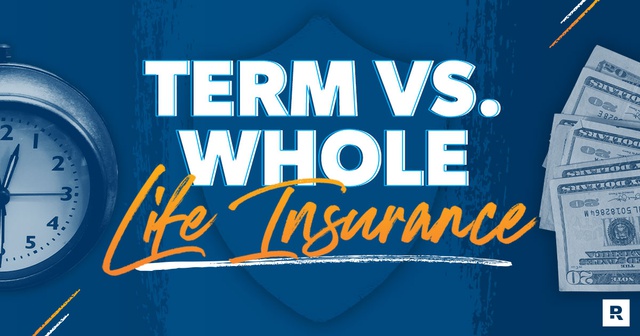A crucial financial choice is between whole life insurance and term life insurance. Both fulfill distinct purposes, and you may choose wisely if you are aware of their advantages, disadvantages, and suitability.
Term and whole life insurance are thoroughly compared in this tutorial, which covers the following topics: ✔ Important distinctions ✔ Benefits and drawbacks of each ✔ Who should purchase either?
✔ Cost comparison ✔ India’s best policies (2024)
1. What is Term Life Insurance?
Term life insurance provides pure life cover for a fixed period (e.g., 10, 20, or 30 years). If the policyholder dies during the term, the nominee receives the sum assured.
Key Features of Term Insurance:
Lowest premium (cheapest form of life insurance)
High coverage (₹1 Cr+ at just ₹500-1,000/month)
No maturity benefit (only death benefit)
Riders available (critical illness, accidental death)
Best Term Insurance Plans in India (2024):
-
HDFC Life Click 2 Protect 3D (Affordable, high CSR)
-
LIC Tech Term (Trusted, good for conservative buyers)
-
Max Life Online Term Plan (Flexible riders)
2. What is Whole Life Insurance?
Whole life insurance provides lifelong coverage (till age 80/100) and includes a savings/investment component.
Key Features of Whole Life Insurance:
Coverage for entire life
Maturity benefit (if you survive the policy term)
Cash value accumulation (some plans offer bonuses)
Higher premiums than term plans
Best Whole Life Insurance Plans in India (2024):
-
LIC Bima Diamond (Popular lifelong cover)
-
HDFC Life Sanchay Plus (Endowment + whole life benefits)
-
SBI Life Saral Life Bima (Simple, affordable whole life plan)
3. Term Life vs. Whole Life Insurance – Key Differences
| Factor | Term Life Insurance | Whole Life Insurance |
|---|---|---|
| Coverage Duration | Fixed term (10-40 yrs) | Lifetime (up to 80-100 yrs) |
| Premium Cost | Very low (₹500-1,000/month for ₹1 Cr) | High (₹10,000+/year) |
| Maturity Benefit | No payout if you survive | Yes (savings + bonuses) |
| Cash Value | No | Yes (grows over time) |
| Best For | Pure protection seekers | Lifelong cover + savings |
4. Pros & Cons: Term vs. Whole Life Insurance
✔ Term Life Insurance – Advantages
-
Lowest cost for high coverage
-
Flexible tenure (choose 10-40 years)
-
Tax benefits (under Section 80C & 10(10D))
✖ Term Life Insurance – Disadvantages
-
No maturity benefit
-
Coverage ends after term
✔ Whole Life Insurance – Advantages
-
Lifelong protection
-
Cash value growth (acts as savings)
-
Loan facility (against policy value)
✖ Whole Life Insurance – Disadvantages
-
Expensive premiums (5-10x costlier than term plans)
-
Lower returns compared to mutual funds
5. Which One Should You Choose?
Buy Term Life Insurance If:
-
You need maximum coverage at lowest cost
-
You want pure protection (no investment component)
-
You are young & healthy (best premium rates)
Buy Whole Life Insurance If:
-
You want lifelong coverage
-
You need insurance + savings (but don’t want market risks)
-
You can afford higher premiums
6. Cost Comparison (Example for ₹1 Cr Cover)
| Age | Term Insurance (Annual Premium) | Whole Life Insurance (Annual Premium) |
|---|---|---|
| 30 yrs | ₹6,000 – ₹10,000 | ₹50,000 – ₹1,00,000 |
| 40 yrs | ₹12,000 – ₹20,000 | ₹70,000 – ₹1,20,000 |
💡 Term insurance is 5-10x cheaper than whole life insurance for the same coverage.
7. Can You Switch from Term to Whole Life Later?
Some insurers allow conversion of term plans to whole life (e.g., LIC’s Term to Whole Life Conversion). However:
-
Additional premium will apply
-
Medical tests may be required
8. Final Verdict: Which is Better?
-
For 90% of people → Term Insurance (best value for money)
-
Only if you need lifelong cover + savings → Whole Life Insurance
🔗 Next Steps:
✔ Use an insurance premium calculator (Policybazaar, Coverfox)
✔ Compare claim settlement ratios (CSR) before buying
FAQs
❓ Which has better returns – term or whole life?
→ Term + Mutual Funds give higher returns than whole life policies.
❓ Can I surrender a whole life policy?
→ Yes, but surrender value is low in early years.
❓ Is term insurance enough for retirement planning?
→ No, pair it with PPF, NPS, or mutual funds for better growth.
Conclusion
Term insurance is the best choice for most Indians due to its affordability and high coverage. Whole life insurance suits those who want permanent coverage with savings, but it’s costlier.

